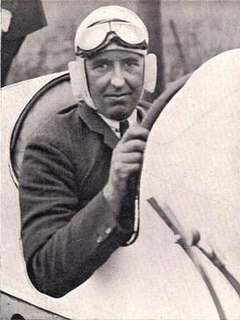
The Citroën DS is a front-engine, front-wheel-drive executive car that was manufactured and marketed by the French company Citroën from 1955 to 1975 in sedan, wagon/estate and convertible body configurations across three series, or generations.

The Arab was a high-performance English automobile designed by Reid Railton and manufactured in Letchworth, Hertfordshire, between 1926 and 1928. The factory had previously been used by the Phoenix car company.

The Fiat 131 is a family sedan manufactured and marketed by Fiat from 1974 to 1984 after its debut at the 1974 Turin Motor Show. Available as a two-door and four-door saloon and 5-door estate across a single generation, the 131 succeeded the Fiat 124.

Albion Motors was a Scottish automobile and commercial vehicle manufacturer.

The Swift Motor Company made Swift Cars in Coventry, England from 1900 until 1931. It grew progressively from James Starley's Coventry Sewing Machine Company, via bicycle and motorised cycle manufacture. The cars ranged from a single-cylinder car in 1900 using an MMC engine, through a Swift-engined twin-cylinder 7-horsepower light car in 1904, and a 3-litre model in 1913. After the First World War a successful range was sold during the 1920s, but the Cadet of 1930 was its last vehicle as it could not compete economically with volume manufacturers such as Ford and Morris Motors.

The Wartburg was a car marque manufactured in East Germany.
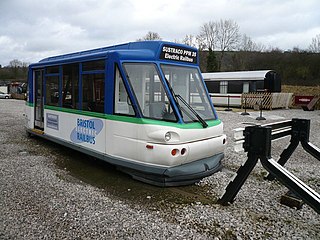
Parry People Movers Ltd. (PPM) is a British company manufacturing lightweight trams and railcars that use flywheel energy storage (FES) to store energy for traction, allowing electric systems to operate without overhead wires or third rails, and railcars fuelled by small gas, diesel or hydrogen engines.

The MG F-type Magna is a six-cylinder-engined car that was produced by MG from October 1931 to 1932. It was also known as the 12/70.

The Fiat 1300 and Fiat 1500 are automobiles which were manufactured by the Italian automaker Fiat from 1961 to 1967. They replaced the Fiat 1400 and Fiat 1200 coupé, spyder and cabriolet. The 1300 and 1500 were essentially identical except for their engine displacement, as indicated by their model names. They were available as a saloon and station wagon, and as convertible and coupé models which shared little mechanically with the other body styles except the 1500 engine.

The Lancia Trikappa is a passenger car produced by Lancia between 1922 and 1925. It was a luxury car, the flagship of Lancia's production. The Trikappa 4.5-litre V8 is notable as the first of Lancia's narrow V engines, a distinguishing feature the manufacturer only abandoned in the 1970s. The car was offered as a bare rolling chassis, as torpedo or 6-seater coupé de ville. In total 847 were manufactured.
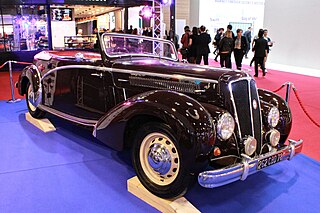
Salmson is a French engineering company. Initially a pump manufacturer, it turned to automobile and aeroplane manufacturing in the 20th century, returning to pump manufacturing in the 1960s, and re-expanded to a number of products and services in the late 20th and into the 21st century. It is headquartered in Chatou and has production facilities in Laval. It has subsidiaries in Argentina, Italy, Lebanon, Portugal, South Africa and Vietnam.
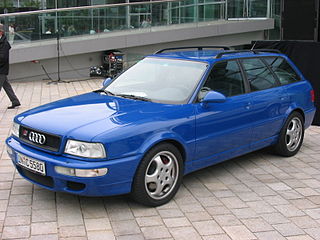
The Audi RS2 Avant, usually known as Audi 80 RS2, was a limited edition, high-performance Audi five-door, five-seat estate car, manufactured from March 1994 to July 1995. Collaboratively designed as a joint venture between Audi AG and Porsche and built on Audi's 80 Avant, designated internally as P1. It was Audi's first "RS" vehicle, and the first of their high-performance Avants ; it used the most powerful and most thoroughly developed version of Audi's inline-five cylinder turbocharged internal combustion engine.
John North Birch (1867–1945) was born in Foleshill, Warwickshire, England, and trained as an engineer. He constructed his own pushbikes (bicycle) and automobiles. Birch also used the first names George and William (Bill) while in New Zealand.

The Warren-Lambert Engineering Co. Ltd. was a British automobile manufacturer that was established from 1912 to 1922 in Richmond, then in Surrey. A. Warren Lambert, was an agent for Morgan cars in Putney which he also raced. In 1912 he designed and started to manufacture a two-seat four-wheel cyclecar from premises in Uxbridge Road, Shepherd's Bush. It was well received and around 25 cars a week were being made.

The Citroën B12 was an automobile produced by Citroën at André Citroën's factory in central Paris, and available for public sale between October 1925 and January 1927. 38,381 were produced.

Car controls are the components in automobiles and other powered road vehicles, such as trucks and buses, used for driving and parking.
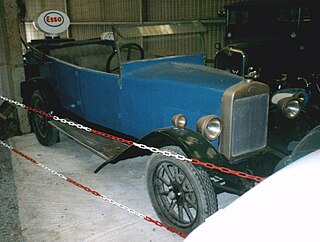
The Rhode was a British car made from 1921 to 1930. Mead and Deakin Ltd had started in business making cycle and motor cycle components. They also made the "Canoelet" sidecar. In 1912 they made at least two cyclecars under the name of Medea with 1244cc Chapuis-Dornier emgines but these did not go into series production.

